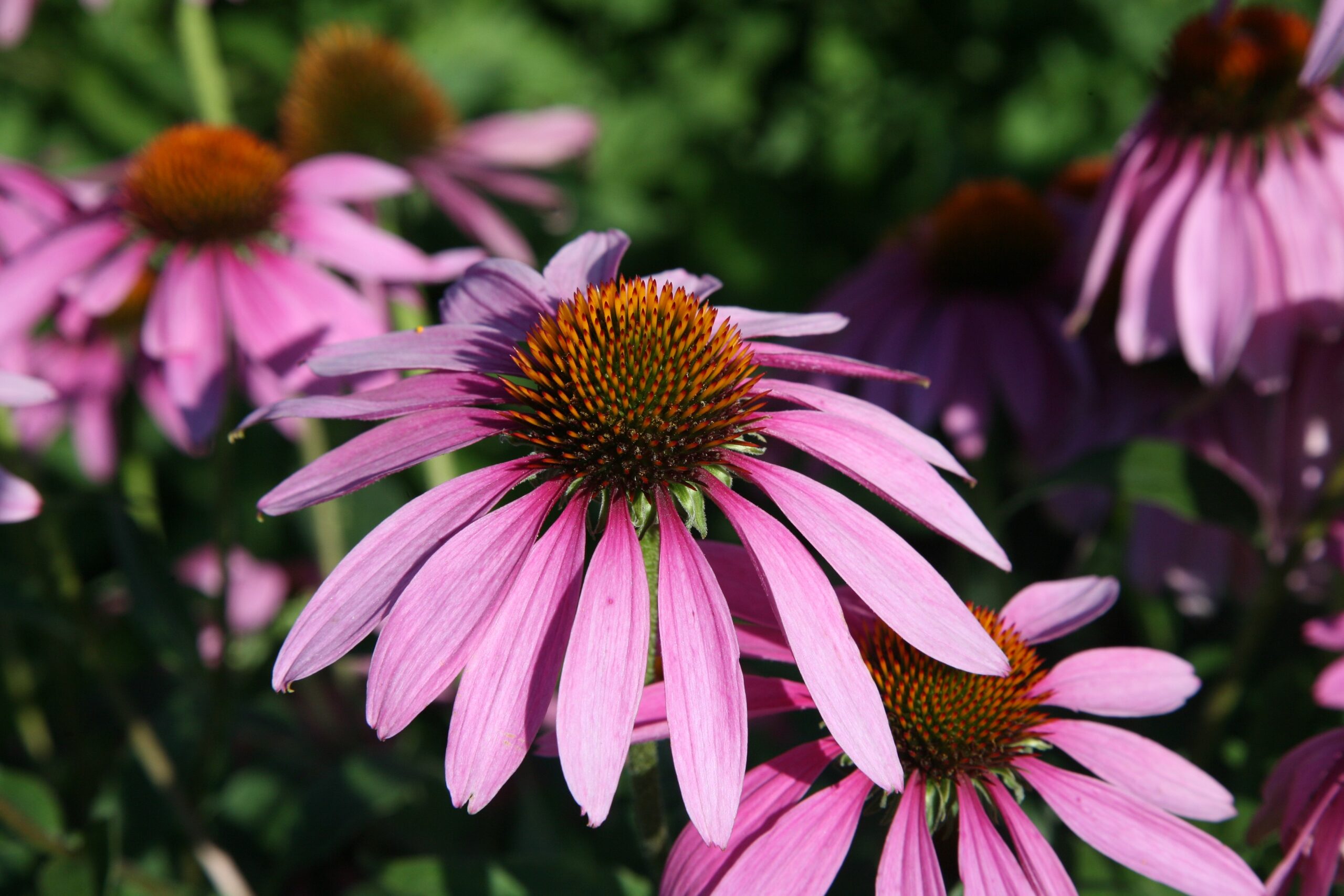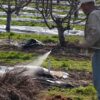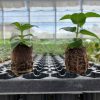As the horticultural industry has evolved over the last several years, it has been evident that successful growers not only know how to grow (operations) and sell quality plants (sales and marketing), but they also have high-quality accounting teams (business management) that help the operation to truly know their cost of production. Until a grower knows their operating costs, it is difficult to know the financial savings through cost reductions you can achieve with the use of mycorrhizae.
Dr. Charlie Hall, AmericanHort’s Chief Economist, outlines that grower input costs can be broken down into nine categories.
| Containers & other plastics | Media (peat-based) | Propagation materials |
| Plant protection products | Fertilizers | Labor (wages) |
| Fuel/Energy | Maintenance (supplies & repairs) | Freight and trucking |
Over the next several “Focus on Biologicals” articles I will be addressing the potential return on investment (ROI) opportunities for mycorrhizae use. Today’s article will focus on the return on investment from mycorrhizae use and its impacts on nutrients (fertilizers).
Mycorrhizae’s main function once it connects to the plant is to expand the plant’s root mass. I specifically did not say expand the plant roots. Most of the expansion of the root mass is due to the development of a hyphal network that extends both beyond the current root’s area of influence but also in areas within the current root’s volumetric area that are not accessible by the roots alone. Over time, the mycorrhizae impacted root mass can expand up to 50 times the original root mass. This can mean an extension of up to 2 feet beyond the most outer roots in a plant grown in mineral soil or the more fully capturing nutrients and water within the existing root zone. The increased absorptive area is hard for most of us to image unless we view a 3-D root image. You cannot always see the difference when you “pop” a plant out of a pot. The mycorrhizal hyphae are better than roots at absorption. Nutrients and water can be absorbed along the entire length of the hyphae compared with just the tip for roots and root hairs. On top of that, mineral nutrient uptake through hyphae can come from both the soluble and insoluble pool of nutrients. And to ensure uptake efficiency, mycorrhizal hyphae allow for greater inflows through their system. Plants with mycorrhizal relationships develop better root absorption systems that benefit the plant.
The development of the expanded root mass helps plants to be more efficient at the uptake of nutrients. Mycorrhizae can store nutrients during times of excess and make them available during times of need by the plant. Since the long-term livelihood of the mycorrhizae is linked to the long-term livelihood of the plant, the mycorrhizae will act as a nutrient buffer moderating the supplies of nutrients made available to the plant. In addition, mycorrhizae can reduce the stress of high EC conditions or water. One of the more valued traits of mycorrhizae is their ability to find and modify nutrients found in the soil and transform them into a form the plant can use. Mycorrhizae can do this work by themselves or can work with bacteria to accomplish this task. A good example of this is when you apply an Ammonium-based fertilizer, and the mycorrhizae/bacteria transform the ammonium into a nitrate form the plant can readily use. Many nutrients become unavailable once they are applied to a growing mix. Mycorrhizae can transform those locked-up nutrients and lesser available organic nutrients into forms the plant can readily use.
Mycorrhizae allow plants to better access and utilize fertilizer. You get greater value for the applied nutrients or those locked up in your mineral soil. This concept applies whether you are feeding with a water-soluble, controlled-release, or organic nutrients. On longer-term crops, lower levels of nutrients can be used. Nitrogen and phosphorus runoff is also reduced because the plant is utilizing more of what you apply.
Nutrient Cost Savings Example
Suppose a propagator is growing 1,000 seventy-two cell propagation trays. This same grower is using MycoApply Injector Endo Organic. Each 100-gram bag of MycoApply Injector Endo Organic produces 100 gallons of drench when used at the one-gallon to one-hundred-gallon dilution rate. Each one hundred gallon drenches approximately 330-335 seventy-two cell propagation trays. The grower would need to use three scoops of one bag of MycoApply Injector Endo Organic to drench the one thousand seventy-two cell propagation trays. The material costs to treat a tray would be less than a dollar to treat a seventy-two-cell propagation tray. The cost per plant would be less than $0.003 per plant or $0.009 cents per 10” basket. That is less than a penny per basket. This example works for both a self-propagator and a grower who purchases plugs and drenches them before they are planted into the baskets.
Crop: Calibrachoa in 10-inch baskets
Crop Duration: 10 weeks
Planting: 3 liner plants per basket
Crop Time: Ten-week crop
Fertilization Rate: 200 ppm constant feed
Average Water Application Rate: 0.35 gallons per basket per day
Fertilizer of Choice: 20-10-20
Application Rate: 1:100, 13.4 ounces of fertilizer per gallon of stock
Estimate Fertilizer Cost: $40 per twenty-five-pound bag.
Fertilizer usage per basket over the entire crop time (70 days x 0.35 gallons per day) 24.5 gallons per 10-inch basket per 10-week crop time
Cost to treat 100 gallons of fertilizer: (13.4 ounces per 1 gallon of stock per 100 gallons of final product/400 ounces per 25 lbs.) *$40 per 25 lb. bag, $1.34 per 100 gallons of fertilizer.
Material cost to treat a basket over the entire crop ((24.5 gallons/100 gallons) X $1.34 per 100 gallons): $0.328.
Breakeven Point: 2.8% fertilizer reduction: $0.0091 approximately equal to the cost of MycoApply mycorrhizae application $0.009 per 3 plants per 10” basket.
Conclusion: The use of mycorrhizae can reduce your fertilizer usage. If your reduction is more than 2.8%, just based on the cost of the fertilizer, a grower saves money when they use MycoApply mycorrhizae. These numbers were developed for illustration purposes, your operations numbers will vary (particularly the volume of fertigation you apply). Historically growers can reduce their fertilizer usage by up to 40 percent (depending on crop, cultural practices, and crop time) compared with not using MycoApply mycorrhizae. We suggest you compare tissue analyses of treated and untreated to ensure your plants are getting sufficient fertilization.
The use of MycoApply mycorrhizae can go beyond just the return on investment with the reduction of nutrients, but it can also improve the overall health of the plants you grow. Subsequent articles will address this topic and others in illustrating the ROI for the use of mycorrhizae beyond fertilizer reduction.
How much do you want to reduce your fertilizer costs? A MycoApply mycorrhizae trial is the best way for you to confirm this example will work in our operation. Money is sitting on the table.
If you have any questions about anything covered in this article or MycoApply Mycorrhizae, please contact your local Mycorrhizal Applications Representative or call 866-476-7800 or email us at inquiries@mycorrhizae.com.
Written by: Blair Busenbark, Sales and Commercial Marketing Manager, Mycorrhizal Applications







